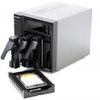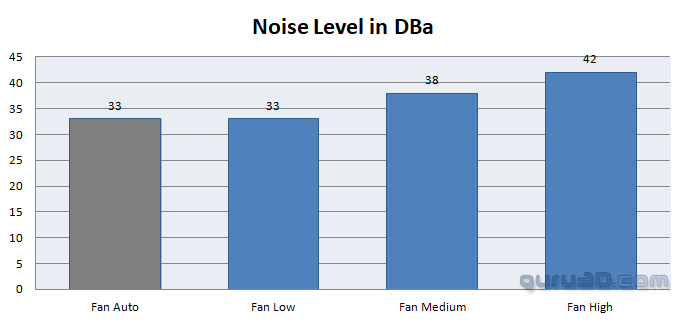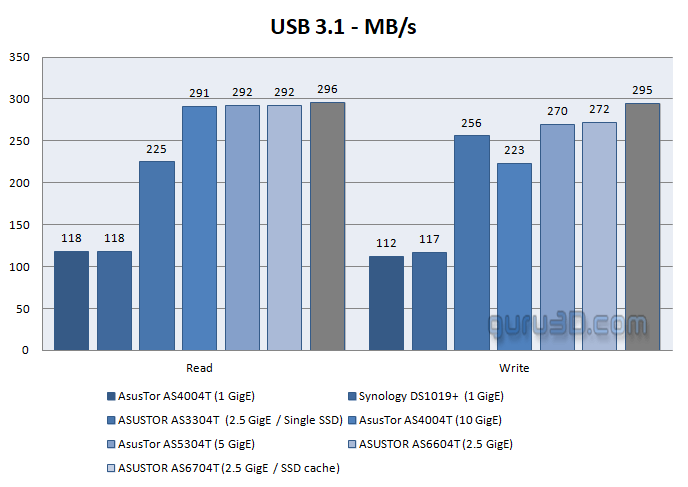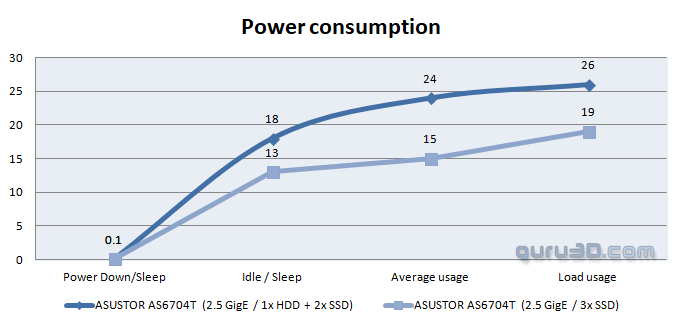USB Perf - Power Consumption & Noise levels
Noise Levels
When computer hardware produces a lot of heat, usually that heat needs to be transported away from the hot core as fast as possible. Often you'll see massive active fan solutions that can indeed get rid of the heat, yet all the fans these days make the PC, a noisy son of a gun. Do remember that the test we do is extremely subjective. We bought a certified dBA meter and will start measuring how many dBA originate from the PC. Why is this subjective you ask? Well, there is always noise in the background, from the streets, from the HDD, PSU fan, etc, so this is by a mile or two, an imprecise measurement. You could only achieve objective measurement in a sound test chamber. The human hearing system has different sensitivities at different frequencies. This means that the perception of noise is not at all equal at every frequency. Noise with significant measured levels (in dB) at high or low frequencies will not be as annoying as it would be when its energy is concentrated in the middle frequencies. In other words, the measured noise levels in dB will not reflect the actual human perception of the loudness of the noise. That's why we measure the dBA level. A specific circuit is added to the sound level meter to correct its reading in regards to this concept. This reading is the noise level in dBA. The letter A is added to indicate the correction that was made in the measurement. Frequencies below 1 kHz and above 6 kHz are attenuated, whereas frequencies between 1 kHz and 6 kHz are amplified by the A weighting.
Examples of Sounds Levels
| Jet takeoff (200 feet) | 120 dBA | |
| Construction Site | 110 dBA | Intolerable |
| Shout (5 feet) | 100 dBA | |
| Heavy truck (50 feet) | 90 dBA | Very noisy |
| Urban street | 80 dBA | |
| Automobile interior | 70 dBA | Noisy |
| Normal conversation (3 feet) | 60 dBA | |
| Office, classroom | 50 dBA | Moderate |
| Living room | 40 dBA | |
| Bedroom at night | 30 dBA | Quiet |
| Broadcast studio | 20 dBA | |
| Rustling leaves | 10 dBA | Barely audible |
We measure using a calibrated dBA meter at a distance of 40 cm from the NAS unit. If you will be utilizing HDDs, they will be the source of the noise, since the airflow is hardly audible by default. We do measurements with SSDs inserted. The standard (silent) setting is appropriate. Alternately, you may pick various fan profile modes. Our advice is to choose the Silent or Cool alternative (the latter one has slightly more fan RPM).
USB 3.1 Performance
We make use of a USB 3.2 Gen2 compatible flash drive, one of the faster sticks available on the market, and make USB 2.0 at 25~30 MB/sec look rather pale in comparison. That is the maximum performance for the USB stick right there.
The NAS has two USB 3.2 Gen2 connectors (10 Gbps), which offer quick and easy local storage. Once you pop in a fast Flash disk it'll get mounted and within the NAS will be shared so you can reach the USB stick over your LAN network. At the 2.5 Gigabit jack, we measure excellent maxed out to NIC throughput performance.
Power Consumption
We inserted a wattage meter between the wall outlet and the gadget to determine how much power it truly used. This is essentially a little controller-based server.
Above, you can see a mix of HDD + SSDs and just SSDs. Running just SSDs is so much cheaper on the long run do to energy efficiency. An HDD can utilize 6, maybe even 8 watts per HDD, whereas an SSD typically will draw 2 Watt.
- If you keep adding HDDs at 8 Watt per HDD that's 31 EUR per year for each HDD.
- If you keep adding SSDs at 2 Watt per SSD that's 6 EUR per year for each SSD.
Estimated runtime cost per year at 35 Cents per KWh:
- 1xHDD + 2xSSD; (24 Watt / 1000) x (24hours x 365) x 0.35 = 74 EUR/Year
- 3x SSD; (15 Watt / 1000) x (24hours x 365) x 0.35 = 74 EUR/Year = 46 EUR/Year




